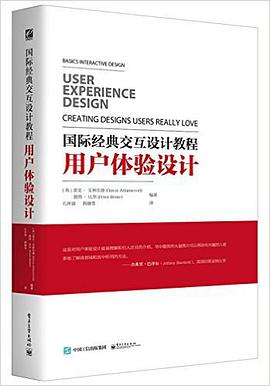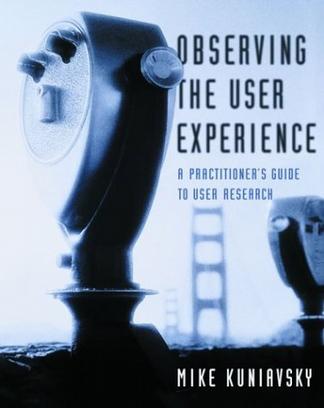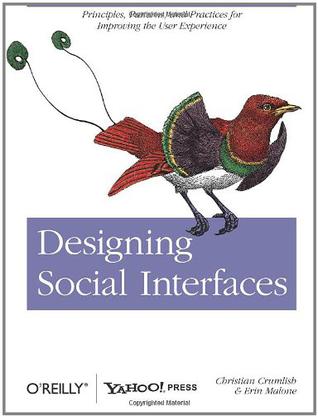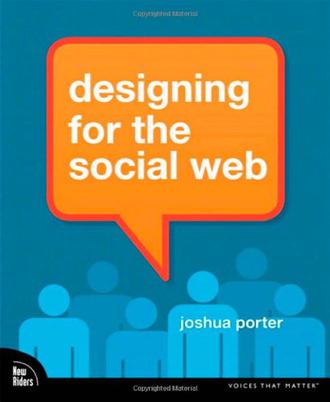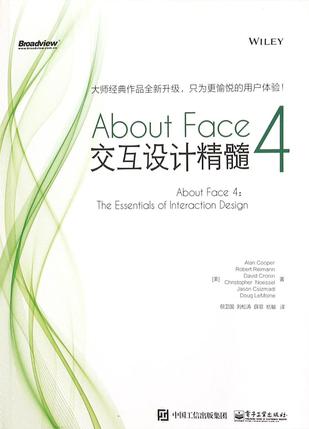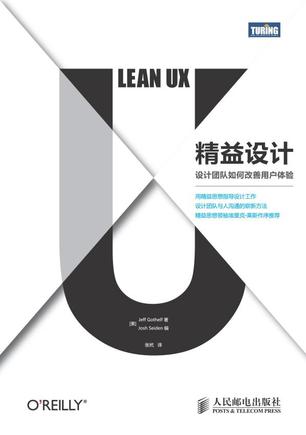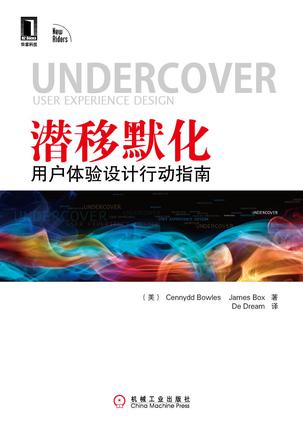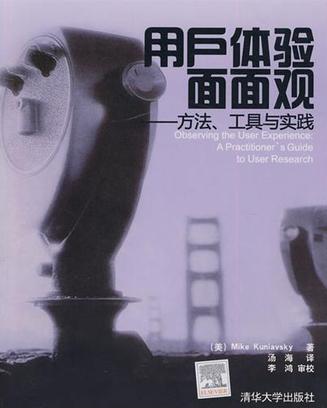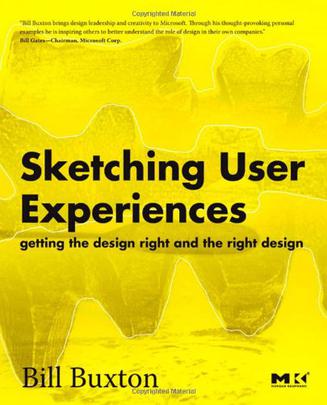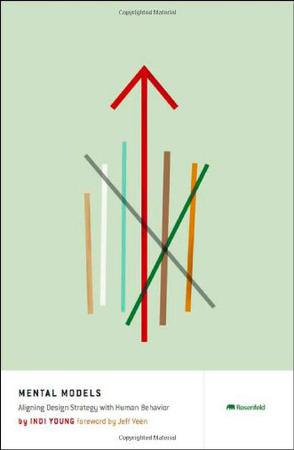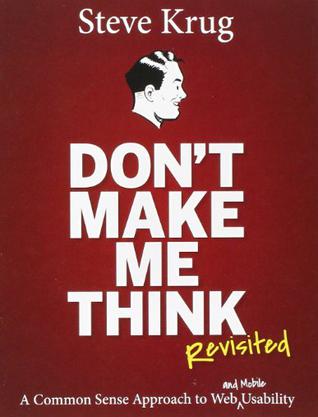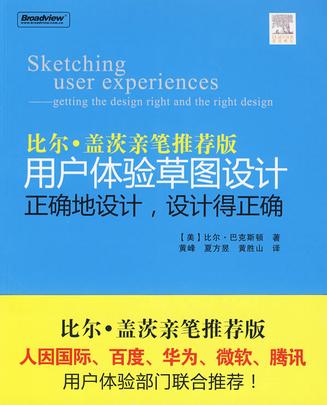欢迎来到相识电子书!
标签:UX
-
国际经典交互设计教程:用户体验设计
本书主要讲解了用户体验设计的法则,设计理念、设计方法、设计流程和工具等,帮助设计师在设计的过程中为用户提供更好的体验从而抓住受众的眼球。作者伊瑞斯(Iris)本身就是英国著名的数字交互设计师和平面设计师,多年的实践经验及常人难以企及的工作氛围,为本书的内容提供了非常丰厚的理论及实践的依据。本书得到英国斯旺西城市大学、西英格兰大学的推荐。
-
Observing the User Experience
The gap between who designers and developers imagine their users are, and who those users really are can be the biggest problem with product development. Observing the User Experience will help you bridge that gap to understand what your users want and need from your product, and whether they'll be able to use what you've created. Filled with real-world experience and a wealth of practical information, this book presents a complete toolbox of techniques to help designers and developers see through the eyes of their users. It provides in-depth coverage of 13 user experience research techniques that will provide a basis for developing better products, whether they're Web, software or mobile based. In addition, it's written with an understanding of how software is developed in the real world, taking tight budgets, short schedules, and existing processes into account. ·Explains how to create usable products that are still original, creative, and unique ·A valuable resource for designers, developers, project managersanyone in a position where their work comes in direct contact with the end user. ·Provides a real-world perspective on research and provides advice about how user research can be done cheaply, quickly and how results can be presented persuasively ·Gives readers the tools and confidence to perform user research on their own designs and tune their software user experience to the unique needs of their product and its users -
Designing Social Interfaces
Knowing how to create a social website to foster user interaction and community building is becoming a core skill for developers and designers today, but grasping the nuances of the social web is much harder than it appears. With more than 100 patterns, principles, and best practices, this book presents practical design solutions that you can use immediately to create or improve a social website interface. Written by curators of "Yahoo!'s Pattern Library", "Designing Social Interfaces" shares hard-won insights into what works, what doesn't, and why. That includes salient advice for many of the common challenges designers and developers face when building managing social websites. This book will help you: learn basic design patterns for adding a social element to an existing site; reign in misbehaving users on an active community site; build a social experience around a product or service, and invite people to join; develop a social utility without having to build an entirely new infrastructure; enable users of your site's content to interact with one another; and, offer your members the opportunity to connect with each other in the real world. The book also exposes antipatterns: emergent bad practices in the social network and social media space. -
Designing For The Social Web
No matter what type of web site or application you’re building, social interaction among the people who use it will be key to its success. They will talk about it, invite their friends, complain, sing its high praises, and dissect it in countless ways. With the right design strategy you can use this social interaction to get people signing up, coming back regularly, and bringing others into the fold. With tons of examples from real-world interfaces and a touch of the underlying social psychology theory, Joshua Porter shows you how to design your next great social web application. Inside, you’ll discover: • The real reasons why people participate online and the psychology behind them • The Usage Lifecycle—or how people use your web application over time • How to get people past that trickiest of hurdles: sign-up • What to do when you’ve launched a web application and nobody is using it • How to analyze the effectiveness of your application screens and flows • How to grow your social web application from zero users to 1000—and beyond Designing for the social web is about much more than adding features. It’s about embracing the social interaction of the people who make you successful—and then designing smartly to encourage it. -
设计调研
设计调研是设计专业学生和设计师在信息时代需要掌握的一项基本技能,因此本书全方位地就这一主题开展讨论。首先定性地介绍了常用的数据采集方法,如观察法、访谈法、问卷法、头脑风暴法、自我陈述法、实验法等,然后阐述常用的调研分析方法,如数量对比分析、知觉图、鱼骨图、卡片归纳法、情景法、人物角色法、故事板、可用性测试、A/B测试、用户点击行为分析、流量、转化率、跳出率和网站数据分析。最后本书介绍了设计调研的一般流程,以及如何从设计调研到设计洞察,并且提供了两个不同设计方向的教学案例:网站设计调研的案例来自阿里巴巴集团,是关于一个淘宝产品——淘宝指数的产生和迭代过程;环境艺术设计的案例来自上海交通大学,是关于闵行公园的场地调研与设计案例。 《设计调研》是一个团队协同的成果。作者来自各大高校和企业活跃在设计第一线的设计师,比如SAP、三星、阿里巴巴、腾讯、搜狐网、大众点评网、上海交通大学、南京艺术学院等。本书各章节的大量案例引用了高校课堂作业和企业的实际产品,它们与时下的设计理念紧密结合。 《设计调研》可以作为高等教育设计学科的专业教材,也可以为各类设计的从业人员提供参考。 -
About Face 4: 交互设计精髓
《About Face 4: 交互设计精髓》是《About Face 3:交互设计精髓》的升级版,此次升级把全书的结构重组优化,更加精练和易用;更新了一些适合当下时代的术语和实例,文字全部重新编译,更加清晰易读;增加了更多目标导向设计过程的细节,更新了现行实践,重点增加 移动和触屏平台交互设计,其实《About Face 4: 交互设计精髓》多数内容适用于多种平台。 《About Face 4: 交互设计精髓》是一本数字产品和系统的交互设计指南,全面系统地讲述了交互设计的过程、原理和方法,涉及的产品和系统有个人计算机上的个人和商务软件、Web 应用、手持设备、信息亭、数字医疗系统、数字工业系统等。运用《About Face 4: 交互设计精髓》的交互设计过程和方法,有助于了解使用者和产品之间的交互行为,进而更好地设计出更具吸引力和更具市场竞争力的产品。 -
界面设计模式
模式意味着重用。 好的模式建立在对人与事物的深刻认知之上。 本书开篇即总结了“与人有关”的各类问题,为读者提供了界面设计总体思路上的指引,帮助读者举一反三。 接下来,本书收集并分析了很多常用的界面设计模式,帮助读者理解在实现级别的各种常用解决方案,将它们灵活地运用到自己的设计中。 同时,随着网络和技术的不断发展,本书在第1 版的基础上,更新了几乎所有的模式示例和说明,并新增了两章全新的移动应用和社交媒体设计模式,帮助读者在这两个新的领域从更高的起点开始设计。 有效的界面设计,从本书开始。 -
精益设计
本书作者根据精益创业法的理念归纳出了行之有效的精益设计方法,让设计团队可以用更低的成本、更高的效率设计出更好的用户体验。本书重点介绍了如何利用精益设计来改善用户体验,让团队摈弃为设计而设计的心态,通过迭代来增进认识,提高效率,并以成果为基础进行设计。另外,书中有大量的案 例分析和研究探讨,还有很多操作性建议。 -
潜移默化
用户体验已成为UI设计领域的重要的核心话题。以用户为中心的设计,也是以UX作为考量标准的。如果用户体验有问题,那么,设计产品的使用就会出现巨大障碍。因此,国内很多知名IT和互联网企业,都非常重视自身网络服务和产品的用户体验。 《潜移默化:用户体验设计行动指南》是来自一线设计师的实践指南,对于如何让UX在真实的公司中工作并解决实际的问题,本书给出了坦率而有用的建议。读者将学会如何把研究、构思、原型和测试应用于日常的工作流程中;如何在普遍的时间、预算和文化的限制下设计出良好的用户体验。 本书对于UI设计师、Web设计师、产品设计师来说,都是一本绝佳的体会和实现用户体验的读物。 -
用户体验面面观
这是一本专注于用户研究和用户体验的经典读物,同时也是一本容易上手的实战手册,从实践者的角度,着重讨论和阐述了用户研究的重要性、主要的用户研究方法和工具,同时借助于实例介绍了相关的应用。全书共3部分18章,深度剖析了何为优秀的用户设计,用户体验包括哪些研究方法和工具,如何 得出和分析用户体验调查结果等。 -
Sketching User Experiences
Bill Buxton and I share a common belief that design leadership together with technical leadership drives innovation. Sketching, prototyping, and design are essential parts of the process we use to create new products. Bill Buxton brings design leadership and creativity to Microsoft. Through his thought-provoking personal examples he is inspiring others to better understand the role of design in their own companies--Bill Gates, Chairman, Microsoft "Informed design is essential." While it might seem that Bill Buxton is exaggerating or kidding with this bold assertion, neither is the case. In an impeccably argued and sumptuously illustrated book, design star Buxton convinces us that design simply must be integrated into the heart of business--Roger Martin, Dean, Rotman School of Management, University of Toronto Design is explained, with the means and manner for successes and failures illuminated by engaging stories, true examples and personal anecdotes. In Sketching User Experiences, Bill Buxton clarifies the processes and skills of design from sketching to experience modeling, in a lively and informative style that is rich with stories and full of his own heart and enthusiasm. At the start we are lost in mountain snows and northern seas, but by the end we are equipped with a deep understanding of the tools of creative design.--Bill Moggridge, Cofounder of IDEO and author of Designing Interactions "Like any secret society, the design community has its strange rituals and initiation procedures. Bill opens up the mysteries of the magical process of design, taking us through a land in which story-telling, orange squeezers, the Wizard of Oz, I-pods, avalanche avoidance, bicycle suspension sketching, and faking it are all points on the design pilgrim's journey. There are lots of ideas and techniques in this book to feed good design and transform the way we think about creating useful stuff". -Peter Gabriel I love this book. There are very few resources available that see across and through all of the disciplines involved in developing great experiences. This is complex stuff and Buxton's work is both informed and insightful. He shares the work in an intimate manner that engages the reader and you will find yourself nodding with agreement, and smiling at the poignant relevance of his examples.--Alistair Hamilton, Symbol Technologies, NY Books that have proposed bringing design into HCI are aplenty, though books that propose bringing software in to Design less common. Nevertheless, Bill manages to skilfully steer a course between the excesses of the two approaches and offers something truly in-between. It could be a real boon to the innovation business by bringing the best of both worlds: design and HCI. --Richard Harper, Microsoft Research, Cambridge There is almost a fervor in the way that new products, with their rich and dynamic interfaces, are being released to the public-typically promising to make lives easier, solve the most difficult of problems, and maybe even make the world a better place. The reality is that few survive, much less deliver on their promise. The folly? An absence of design, and an over-reliance on technology alone as the solution. We need design. But design as described here depends on different skillsets-each essential, but on their own, none sufficient. In this rich ecology, designers are faced with new challenges-challenges that build on, rather than replace, existing skills and practice. Sketching User Experiences approaches design and design thinking as something distinct that needs to be better understood-by both designers and the people with whom they need to work- in order to achieve success with new products and systems. So while the focus is on design, the approach is holistic. Hence, the book speaks to designers, usability specialists, the HCI community, product managers, and business executives. There is an emphasis on balancing the back-end concern with usability and engineering excellence (getting the design right) with an up-front investment in sketching and ideation (getting the right design). Overall, the objective is to build the notion of informed design: molding emerging technology into a form that serves our society and reflects its values. Grounded in both practice and scientific research, Bill Buxton's engaging work aims to spark the imagination while encouraging the use of new techniques, breathing new life into user experience design. . Covers sketching and early prototyping design methods suitable for dynamic product capabilities: cell phones that communicate with each other and other embedded systems, "smart" appliances, and things you only imagine in your dreams; . Thorough coverage of the design sketching method which helps easily build experience prototypes-without the effort of engineering prototypes which are difficult to abandon; . Reaches out to a range of designers, including user interface designers, industrial designers, software engineers, usability engineers, product managers, and others; . Full of case studies, examples, exercises, and projects, and access to video clips (www.mkp.com/sketching) that demonstrate the principles and methods. About the Author Trained as a musician, Bill Buxton began using computers over thirty years ago in his art. This early experience, both in the studio an on stage, helped develop a deep appreciation of both the positive and negative aspects of technology and its impact. This increasingly drew him into both design and research, with a very strong emphasis on interaction and the human aspects of technology. He first came to prominence for his work at the University of Toronto on digital musical instruments and the novel interfaces that they employed. This work in the late 70s gained the attention of Xerox PARC, where Buxton participated in pioneering work in collaborative work, interaction techniques and ubiquitous computing. He then went on to become Chief Scientist of SGI and Alias|Wavefront, where he had the opportunity to work with some of the top film makers and industrial designers in the world. He is now a principal researcher at Microsoft Corp., where he splits his time between research and helping make design a fundamental pillar of the corporate culture. * Covers sketching and early prototyping design methods suitable for dynamic product capabilities: cell phones that communicate with each other and other embedded systems, "smart" appliances, and things you only imagine in your dreams; * Thorough coverage of the design sketching method which helps easily build experience prototypes-without the effort of engineering prototypes which are difficult to abandon; * Reaches out to a range of designers, including user interface designers, industrial designers, software engineers, usability engineers, product managers, and others; * Full of case studies, examples, exercises, and projects, and access to video clips that demonstrate the principles and methods. -
Don't Make Me Think, Revisited
Since Don’t Make Me Think was first published in 2000, hundreds of thousands of Web designers and developers have relied on usability guru Steve Krug’s guide to help them understand the principles of intuitive navigation and information design. Witty, commonsensical, and eminently practical, it’s one of the best-loved and most recommended books on the subject. Now Steve returns with fresh perspective to reexamine the principles that made Don’t Make Me Think a classic–with updated examples and a new chapter on mobile usability. And it’s still short, profusely illustrated…and best of all–fun to read. If you’ve read it before, you’ll rediscover what made Don’t Make Me Think so essential to Web designers and developers around the world. If you’ve never read it, you’ll see why so many people have said it should be required reading for anyone working on Web sites. “After reading it over a couple of hours and putting its ideas to work for the past five years, I can say it has done more to improve my abilities as a Web designer than any other book.” –Jeffrey Zeldman, author of Designing with Web Standards -
Subject To Change
To achieve success in today's ever-changing and unpredictable markets, competitive businesses need to rethink and reframe their strategies across the board. Instead of approaching new product development from the inside out, companies have to begin by looking at the process from the outside in, beginning with the customer experience. It's a new way of thinking-and working-that can transform companies struggling to adapt to today's environment into innovative, agile, and commercially successful organizations.Companies must develop a new set of organizational competencies: qualitative customer research to better understand customer behaviors and motivations; an open design process to reframe possibilities and translate new ideas into great customer experiences; and agile technological implementation to quickly prototype ideas, getting them from the whiteboard out into the world where people can respond to them. In "Subject to Change: Creating Great Products and Services for an Uncertain World", Adaptive Path, a leading experience strategy and design company, demonstrates how successful businesses can - and should - use customer experiences to inform and shape the product development process, from start to finish. -
用户体验草图设计
《用户体验草图设计:正确地设计,设计得正确(全彩)》:比尔·盖茨亲笔推荐版 人因国际、百度、华为、微软、腾讯用户体验部门联合推荐!
热门标签
下载排行榜
- 1 梦的解析:最佳译本
- 2 李鸿章全传
- 3 淡定的智慧
- 4 心理操控术
- 5 哈佛口才课
- 6 俗世奇人
- 7 日瓦戈医生
- 8 笑死你的逻辑学
- 9 历史老师没教过的历史
- 10 1分钟和陌生人成为朋友

